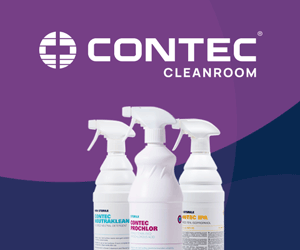Drug resistant superbugs, such as methicillin-resistant Staphylococcus aureus (MRSA), first entered the headlines in the 1990s and while incidences of sepsis relating to MSRA have fallen over the past decade, Escherichia coli-related deaths have grown by 20% over the past five years.
The NHS places the official number of deaths from sepsis traceable to superbugs at around 5,000 in England, whereas The UK Sepsis Trust asserts the figure is more likely to be closer to 12,000. If the latter figure is to be believed, it makes superbugs a bigger killer than breast cancer. The sad fact is that a good proportion of those deaths could be prevented through better hygiene.
The cleaning regime is key to managing risk by preventing infection. This is time-consuming and expensive, whereas factoring in intelligent design choices can reduce both factors. As any healthcare professional knows ‘prevention is better than cure’ and the greatest risk lies in poor hand hygiene. Some 80% of infections, — whether bacterial, viral or fungal — are spread by touch.1
Much good work has been carried out to educate healthcare staff, who are now acutely aware of the risks associated with hand hygiene. Alcohol sanitisers are now a standard feature in institutions across the country. The challenge lies in encouraging the public to use them. While signage does help, ‘opt-in’ applicators will never be 100% effective in practice.
Unfortunately, it seems that hand hygiene simply is not a particular priority for some. While this may seem a sweeping statement, research released by the British Toilet Association found that only one in three people always wash their hands after using the loo. Taking this to its logical conclusion, a study of around 400 people by the London School of Hygiene and Tropical Medicine, found more than one in four tested had faecal matter on their hands. We can touch 300 surfaces in half an hour, so clearly the potential for transferring pathogens is significant.
If you cannot always persuade users to do the right thing, how can you ‘make’ them do it? The answer lies in sanitising gel dispensing door handles, which release virucidal gel when pulled, offer one potential solution. Independent swab testing has shown that gel dispensing handles reduce colony forming units by 87% when compared to standard door handles.2 Moreover, they reduced the Total Viable Count of bacterial loading in hand swab results by a factor of 100. The beauty is if someone wants to enter or exit an area where one is installed, they have no option: their hands will be disinfected as the door is opened.
It makes sense to install these systems at strategic points, such as entry points to hospital wards or canteens and the exits of washrooms. However, they can be used equally well as part of a holistic hygiene strategy throughout a facility. Combining these dispensers with sanitising foot baths at points of entry (for example), will have a very positive impact on overall hygiene standards.
Designing in hygiene
The starting point for better hygiene control is to minimise any opportunities for bugs to live and breed on-site. Specialist furniture and support equipment for the healthcare sector should have hygiene factored into the design itself, minimising the potential infection risks from any gap, ledge, fold or even raised weld that could harbour microorganisms. Areas handling liquids are of particular concern, so choose designs that do not have flat surfaces that could collect water (and bacteria), especially around taps.
Finally, think about the material from which furniture is constructed, both in terms of hygiene and ‘cleanability’. 304 grade stainless steel is a low risk option, it has no pores or cracks in which microbial contaminants may lurk. It is also essentially inert to most acids and alkali, so corrosion and the creation of contamination traps is avoided.
Establishing a hygiene culture comes down to managing risk and the greatest one is people, especially infrequent users such as hospital visitors. Making it almost impossible not to sanitise hands when visiting hospitals should be the priority and should be supported with a commitment to reduce the opportunities for bugs to live and reproduce. Building hygienic design into healthcare environments will ultimately afford greater peace of mind for all stakeholders in the longer term.
References
1. Philip M. Tierno, 2004, The Secret Life of Germs (www.simonandschuster.com)
2. http://www.purehold.co.uk/news/problem-of-cross-contamination-on-hospital-door-handles-is-solved-by-use-of-the-hygiene-handle.html





